LATEST: Prep School Open Morning
LATEST: Senior School Open Morning
LATEST: Sixth Form Open Evening
LATEST: Prep School Open Morning
LATEST: Senior School Open Morning
Back
- Nursery
- Prep
- Senior
- Sixth
- Home
- Contact Us
- Admissions
- Boarding
Date Posted... Nov 11th 2024
Categories..
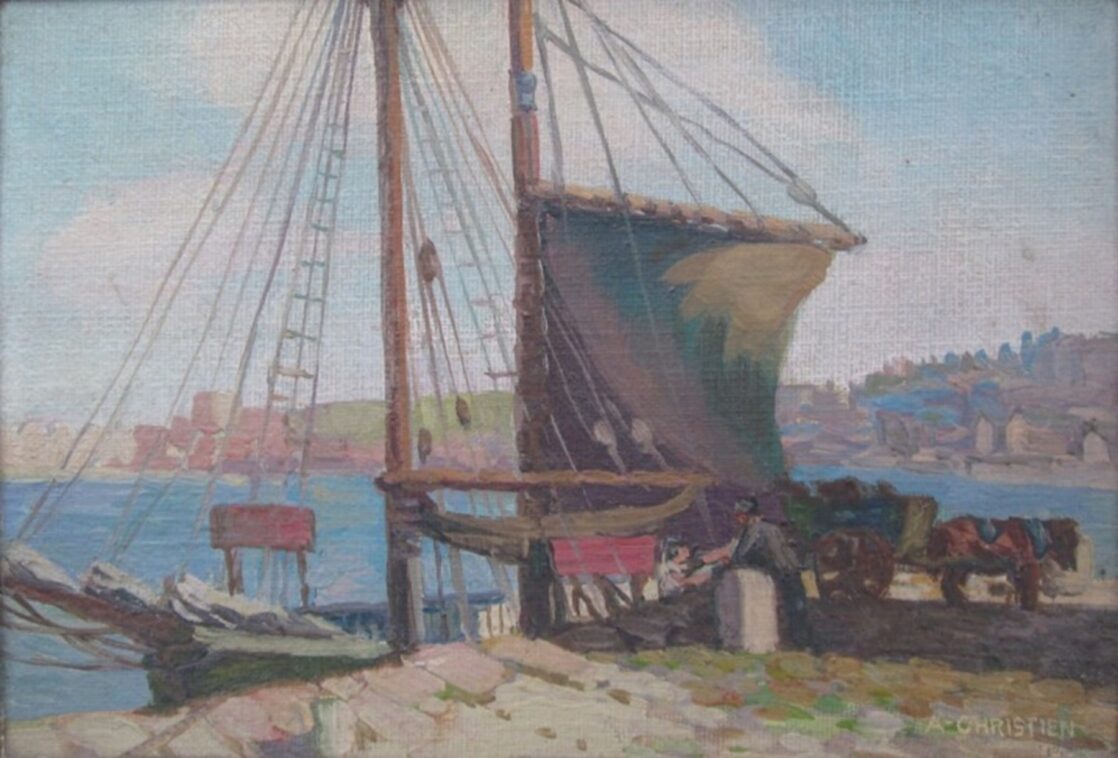
A Quayside with Town beyond, oil painting by Arnold Christien
Arnold, the son of a Wesleyan Methodist minister was born in Burslem, Staffordshire in 1883, and one of seven siblings. The family moved around the north of England many times, following his father’s appointments to different towns, including Leeds in Yorkshire and Farnworth in Lancashire. In 1899 he successfully passed a variety of art exams at the Runcorn Technical Institute, Widnes. In 1904 he was an assistant art master in Stockport, working towards his teacher qualification, and in 1905 he took part in an exhibition of local artists at the Merehall Art Gallery in Bolton, displaying four landscapes. In 1906 the family moved to Cornwall for Reverend Christien to take up an appointment as minister of Falmouth Wesleyan Methodist Church. Arnold came down to Cornwall with his family; in December that year the Cornish Echo and Falmouth and Penryn Times reported that at the Falmouth Wesleyans’ Bazaar among the various side attractions was a splendid exhibition of paintings including ‘a realistic painting of the Rev C.W.L. Christien by his talented son (Mr Arnold Christien)’. The following April, Arnold’s portrait in oils of Mr J.R. Corlyon, Superintendent of the Sunday School, was unveiled, and was described as ‘an exceptionally good one’. By 1910 he was an assistant art master at the Truro School of Art, part of the Central Technical Schools (now Truro Library) in Union Place, Truro and was working towards his Art Master’ Certificate. After Rollason died in 1911, Arnold took over his role as Art Master at the Truro School of Art as well as his teaching duties at Truro College, until a replacement was found, and impressed everyone with his abilities.
In November 1915 Arnold enlisted as a private, 5210, in the 3/4th Battalion DCLI. He married Maud Lousie John the following July, who also taught art at the Technical School and later at Truro College. Three weeks later he left for India to join his new regiment, the 1st East Yorkshire. By early May 1918 Arnold had transferred to the Army clothing store depot at the Fort, Lahore as an Assistant Packing Overseer. Unfortunately, he died of pneumonia a few weeks later, on 30 May, aged 37. His name is recorded on the 1914-18 War Memorial in Karachi and on the war memorial in the Truro Methodist Church.
He played for the school football team in a match against Truro City. The School eventually lost five goals to three.
‘When these teams last met in 1928 the School defeated the City by six goals to one, and the City thus avenged a defeat of eleven years standing. Half-way though the first half it seemed as if the City would win by as great a margin as the School did in 1928, but the School put up a dogged and plucky resistance and lost by only two goals. …The School’s first goal was extremely lucky. Harvey lofted the ball up the field and it was saved by Donovan, but Thompson rushed in and forced the Truro ‘keeper over the line. Truro returned to the attack, and Wroe saved from Holland and Webb in quick succession. Evans reduced the arrears for the School, scoring from Thompson’s pass. Truro’s last goal was scored by Webb. Immediately afterwards the School scored the most remarkable goal of the match. Their forwards rushed from the centre-line and Stanier scored before any of the Truro players could touch the ball.’
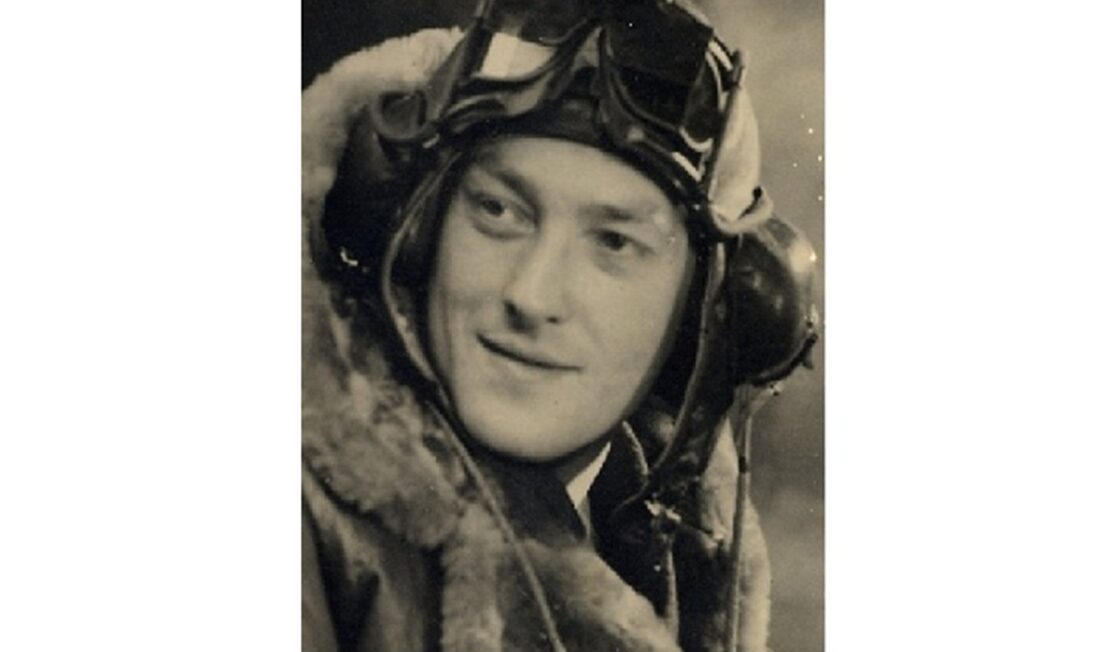
Arnold Stanier
Cedric Stratton (TS 1939-50) recalled in the 2001 TSFPA Newsletter teachers who had been at the school when he was there, including
‘…“Pop” Stanier, beloved art teacher, heard England’s call, and joined up, becoming a tail-gunner. He never returned. We knew only that he had done what was expected of him, protecting us, England’s future’
The headmaster’s Speech Day report for 1939-40 included that Arnold had joined the Forces. He joined 107 Squadron RAFVR, and became a Sergeant Observer, serving in the Middle East and in the closing stages of the Desert Campaign. The school magazine reported in 1942 that
Mr Arnold Stanier, ATD, made a large number of operational flights over Germany as Observer in a large Bomber. He was eventually sent to Malta and news was received that his plane was seen to crash in action over Libya. Subsequently Rome Radio reported him as a prisoner of war, but an International Red Cross message stated that he died of severe wounds on October 27th and was buried at Misurata, Libya. Mr Stanier was our last Art Master and boys will remember his excellent work not only in the Art Room but on the Sports Field.
In 2005 photos of Arnold Stanier were given to the School by Elsie Sutherland (nee Gaite), a former school matron, who had been engaged to Arnold before his death. These included two photos of him in the RAF rugby team, and two in flight uniform, as well as two pen and ink drawings and a cross-country photo. A label on the back of the cross-county photo also refers to a scholarship set up by Elsie Sutherland in memory of Arnold Stanier.
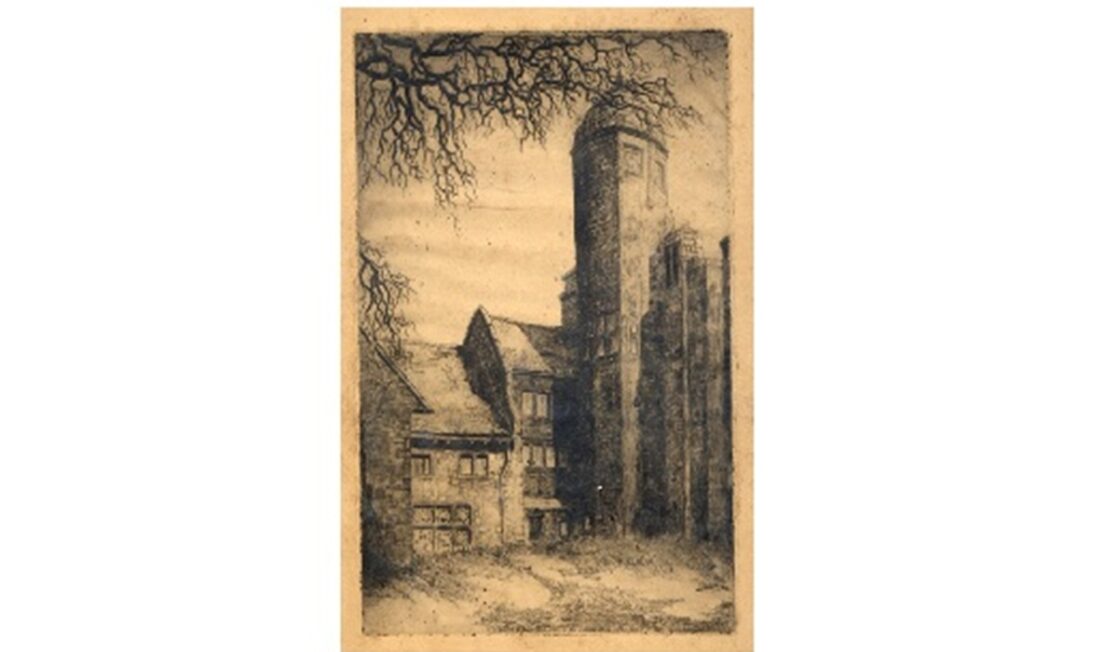
Pen and ink drawings by Arnold Stanier
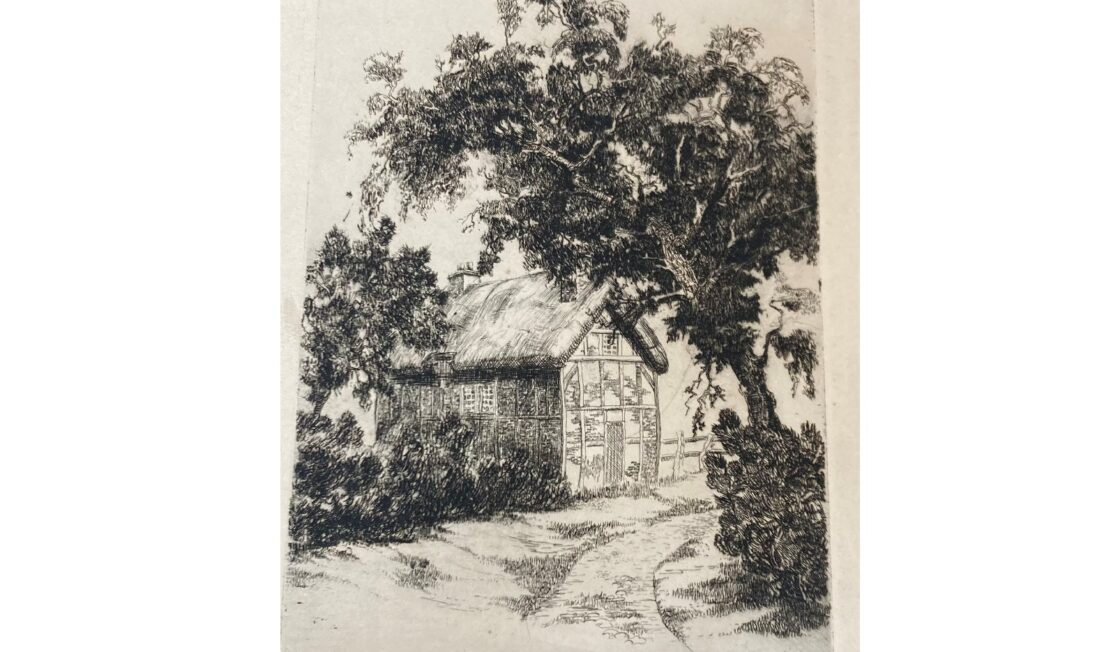
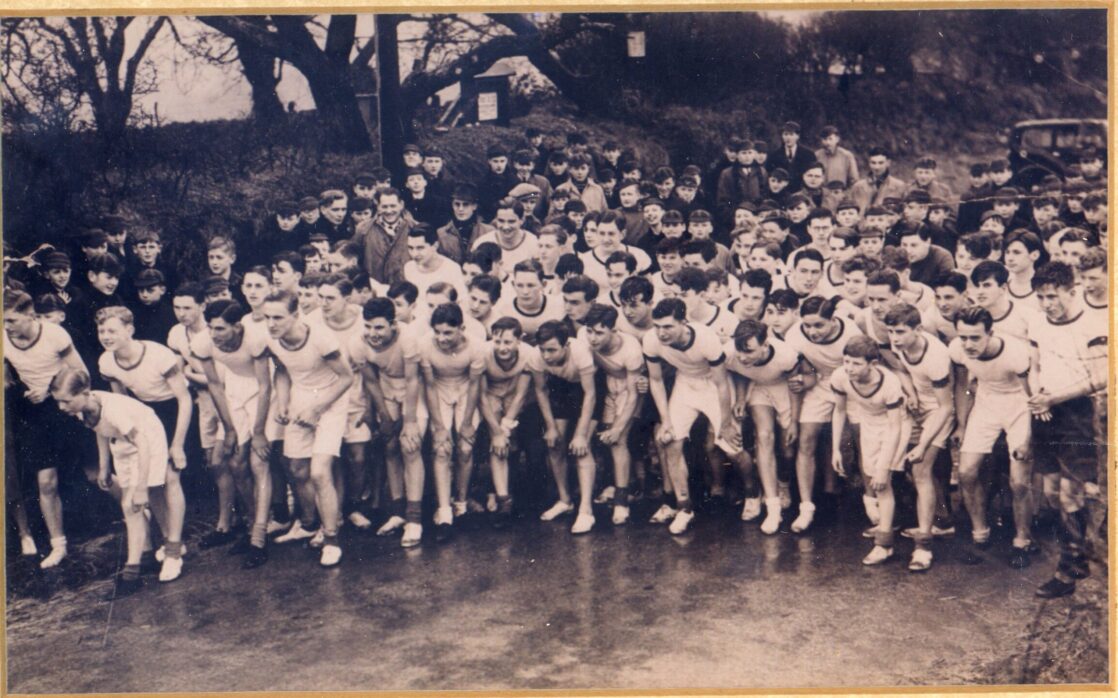
Cross country photo with Arnold Stanier left of centre standing in a raincoat with no hat on
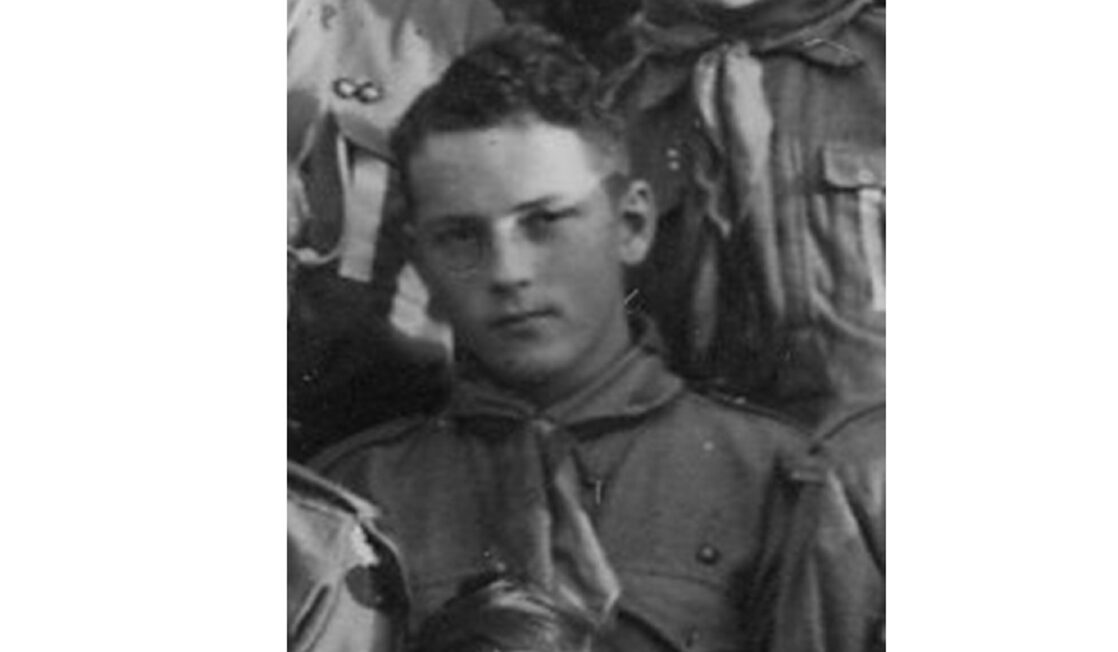
Peter Reid in Truro School Scouts
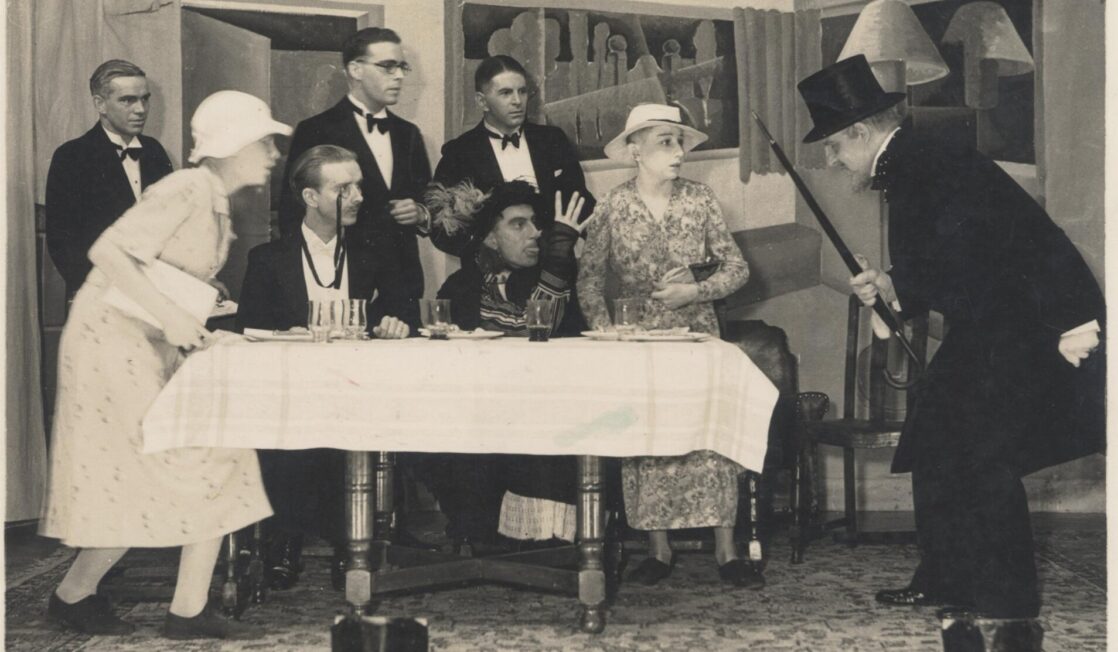
Scene from Charley's Aunt, 1938
Before coming to Cornwall, he attended Cheadle House School in Cheshire. While at Truro his father worked in the Philippines as an insurance official. As well as being a member of the School’s Scout Troop, Peter took part in the 1938 Masters’ Feast production of Charley’s Aunt as Ela Delahaye. The March 1938 school magazine reported
On February 10th and 11th last a public performance of Charley’s Aunt was given in the School Hall. The audience gave ample evidence of its enjoyment of the varied scenes and on both nights the hall was full.
In the course of the play the many characters were ably presented by the actors, no opportunity being lost to represent to the full the many tendencies of each role. Mr Wilkes as Fanny Babs certainly made things go with a swing … The girls were admirable, exercising all the varied feelings of the heart – they were so real.
In July 1939 he won the Art prize at Speech Day. Once in Canada he continued to study art at Shawnigan Lake School, British Columbia. His attestation papers when he joined the Royal Canadian Air Force, declared that he was a student at the time, and his future ambition was to be a commercial artist. He felt that his drawing qualifications would be useful to the RCAF when he joined 406 Squadron as a navigator.
Peter undertook a pre-entry aircrew educational course at Vancouver Technical School in 1941, before joining up officially. At the time of joining the RCAF in 1942 Peter’s parents were interred in a camp in Manilla in the Philippines.
406 Squadron was formed in May 1941 as part of No. 12 Group of Fighter Command to operated night fighters. By July 1944 the squadron had upgraded its aeroplanes to the Mosquito MkXXX from Blenheims and Beaufighters. On 11 December 1944 Flight Lieutenant Peter Reid (Navigator) and Flying Officer James Lawless (Pilot) took off at 7.30pm in their MM707 Mosquito Mk30 for a night intruder mission to Leeuwarden. They had been together as pilot and navigator for quite some time, flying both Mosquitoes and Beaufighters. Neither came back. They were reported missing and have become two of the 406 Squadron’s ‘Lost Boys’; their bodies were never found.
At Speech Day in 1934 he was awarded the Commended Prize for Form II, after being absent due to illness in the Spring term. He took part in various aspects of school life. While in the Upper IIIa he wrote The Sante Patricia, a story which appeared in the December 1935 school magazine. He also played for the 1st XV rugby team and was a Sixer in the 1st Truro School Cubs in 1935. He was also a warden, and later a prefect for School House.
David was interested in drama and took part in several school plays as a member of the newly formed Drama Society. In his final term, in 1939, he was Property Manager for the Drama Society.
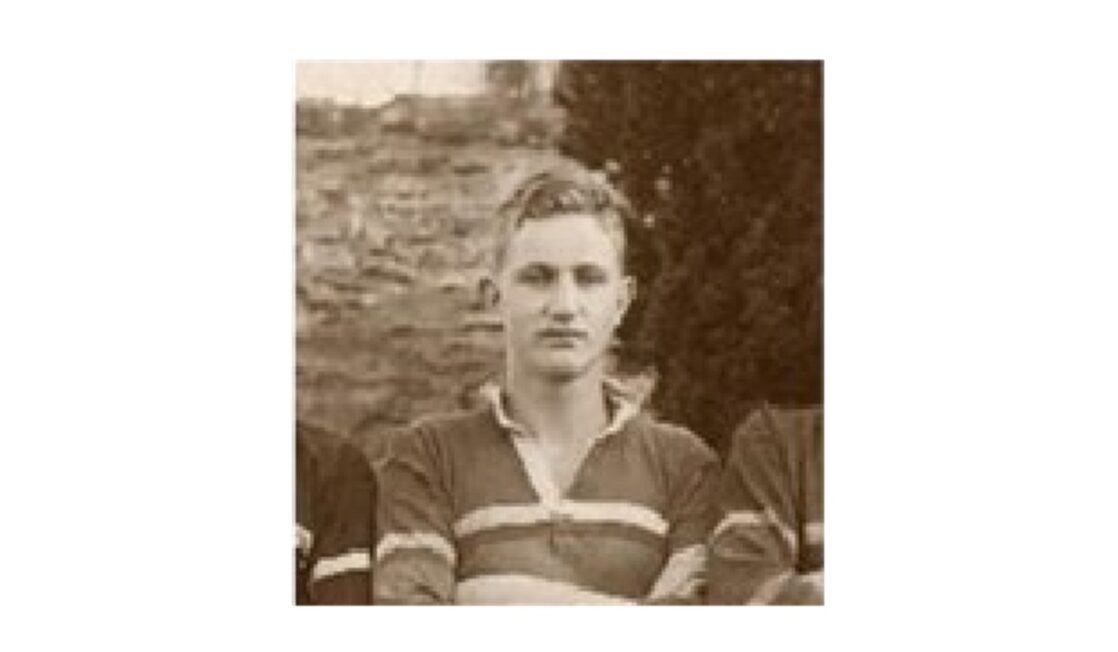
David Bennett in the school rugby team
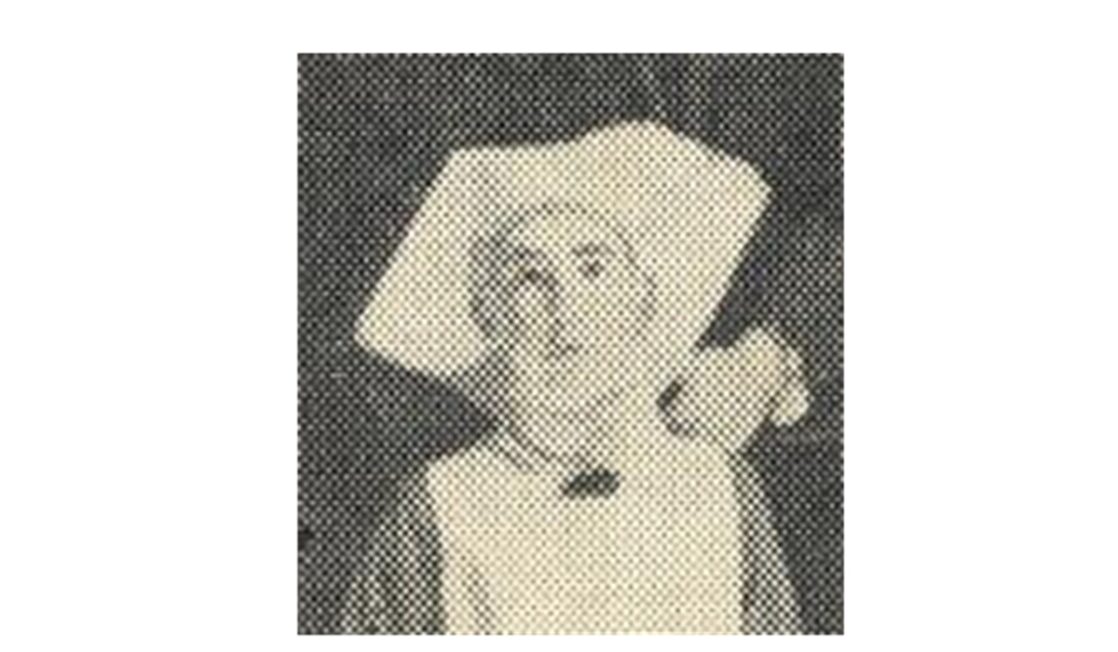
David Bennett as Flossie Nightingale in The Housemaster
On 2 and 3 March 1939 he took part in The Housemaster by Ian Hay, as ‘Flossie’ Nightingale.
The production was under Mr E.B. Willday, B.A., to whom much credit was due for his able handling of each situation and particularly of the midnight scene. The scenery, designed and executed by Mr A. Stanier, A.T.D., was very effective. The noises off were realistically devised by Clarke and Jones, C.H., and the choral effects of the School choir, under Mr S. Way, added to the very high standard of the production. To praise any one character would be to praise the whole cast. The acting was excellent, and great was the delight of the audience when the ‘lad in spectacles’ appeared with his outstanding interpretation of an unique character.
After leaving Form VI in 1939, David joined the Civil Service. His elder brother, Richard John Bennett (d.24 April 1944), also attended Truro School (TS 1931-37).
David initially joined the Home Guard at Moreton in Dorset. He transferred to the RNAS Eastleigh Fleet Air Arm in September 1941. He later joined the 1770 Naval Air Squadron, formed at RNAS Yeovilton in September 1943. The Squadron joined the HMS Indefatigable in May 1944 and took part in several attacks on German battleships off the Norwegian coast. David took part in Operation Offspring that took place on 10-11 August 1944. By then a Sub-Lieutenant, he was an Observer in a two-seated Firefly plane. Returning from an attack near Alesund on 11 August, his plane was shot down and ditched into the North Sea 6 miles west of the Storholm Lighthouse. He is buried in the Trondheim Cemetery in Norway.
The 1948 School Memorial Booklet stated that Edward had been a Gunner in the Royal Artillery, and ‘served in India during 1939 and 1940 and then at Gibraltar where he died on December 3rd, 1941’. His death was recorded in the Easter 1942 issue of the school magazine, he ‘entered the Army after leaving school and was a talented musician.’
Leonard was a captain of the 5th attached to the 9th Battalion of the Rifle Brigade, when he died on 3 June 1917, aged 34. He was buried in the London Cemetery, Neuville Vitasse, Pas de Calais, France.
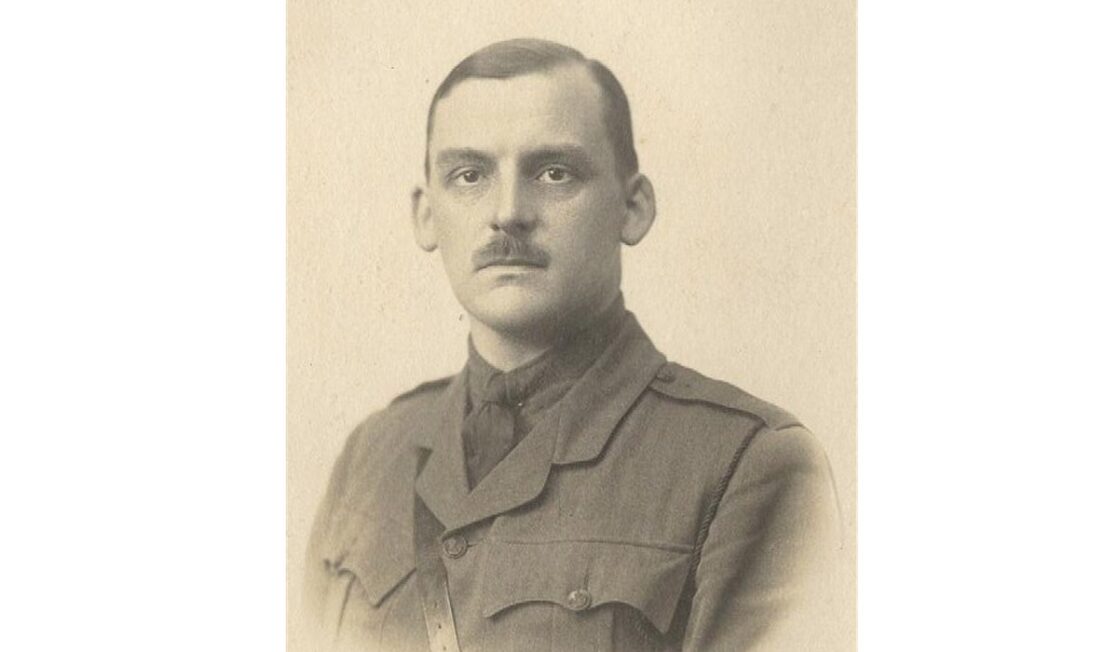
Leonard Davies
Leonard joined the army in July 1915 and was gazetted Second Lieutenant on 14 October. The following March he was sent to France and was promoted to Lieutenant after surviving some of the hardest fighting in the Somme campaign. At the time of his death, he was an Acting Captain and was killed in action while commanding a company at Wancourt. He was described as ‘a brilliant amateur musician, a good sportsman (he had rowed stroke in his college boat), and a man of wide general reading and much literary ability’. St Edward’s School recorded that Leonard Davies
‘in normal times he would never had considered a career in the army and hated the whole aspect of the war, but ‘the call of duty was never unheeded in his ears and he answered it at once when it was clear’. His parting words to a member of the school staff were ‘Remember, in any case, I’m glad I went’.’
On his gravestone were the words ‘Here lies the mortal remains of Leonard Davies, Scholar, Musician, Athlete, Rifleman.’
He was a keen musician and played in a string quartet at the school. After leaving school he received an ‘appointment on the Technical Staff of the Valuation Department, Inland Revenue, Truro, and was also elected a Professional Associate of the Surveyors’ Institution, London. In 1911 he attended the old boys’ dinner in Truro.
At the outbreak of the war Arthur applied for permission to volunteer but could not be spared from the valuation work until September 1915. He enlisted with the Royal Garrison Artillery that November and went to France the following May with the 110th Siege Battery RGA. He was killed in action on 11 November 1916 after being hit by a shell in a dugout. He was buried in Delville Wood Cemetery, Longueval, Somme. The school magazine reported that
‘Whilst he was in the Land Surveying at Truro he frequently visited Truro College, and felt a deep affection for his old school, and cheered us all by his genial presence. Gunner Lawry died, as he had lived, a Christian, and as an O.B. everybody admired his consistent character. As one has said: “He was genial, sincere, modest and gentlemanly”. Another writes saying: “Yesterday the Germans were sweeping our area, and a shell entered the dug-out where he was taking dinner with three friends, killing instantaneously Arthur and two others, and badly wounding badly the fourth … He was respected and loved by the men of the Battery, and all who came in contact with him felt that he was a fine man, earnest, generous in sympathy, charitable to a fault.’
Our school motto, Esse Quam Videri (to be, rather than to seem to be), captures the essence of our identity and is defined by the 5 C's below. Underpinned by strong Christian principles, we are a caring and inclusive community which values, nurtures and develops each individual.
Click on the links below to find out more.